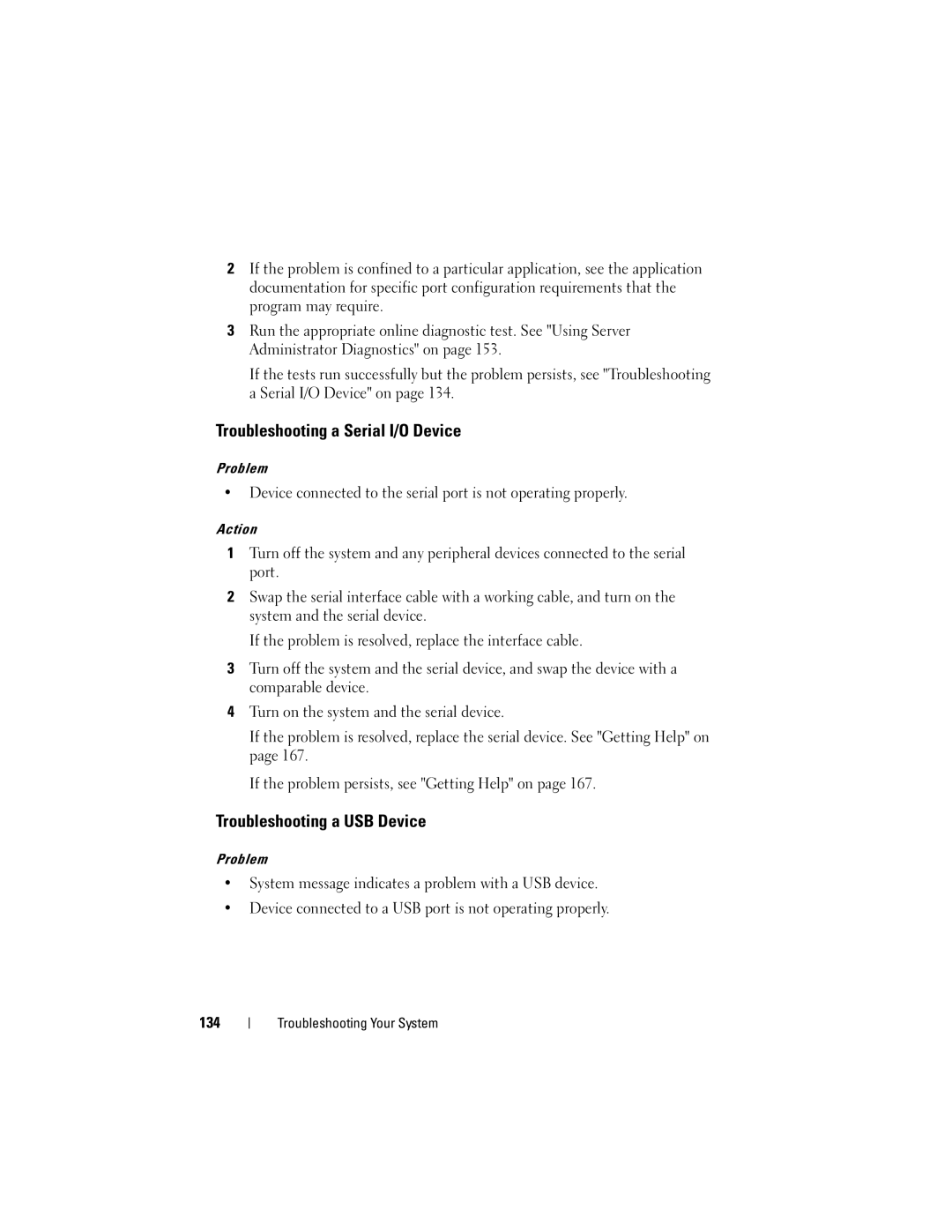2If the problem is confined to a particular application, see the application documentation for specific port configuration requirements that the program may require.
3Run the appropriate online diagnostic test. See "Using Server Administrator Diagnostics" on page 153.
If the tests run successfully but the problem persists, see "Troubleshooting a Serial I/O Device" on page 134.
Troubleshooting a Serial I/O Device
Problem
•Device connected to the serial port is not operating properly.
Action
1Turn off the system and any peripheral devices connected to the serial port.
2Swap the serial interface cable with a working cable, and turn on the system and the serial device.
If the problem is resolved, replace the interface cable.
3Turn off the system and the serial device, and swap the device with a comparable device.
4Turn on the system and the serial device.
If the problem is resolved, replace the serial device. See "Getting Help" on page 167.
If the problem persists, see "Getting Help" on page 167.
Troubleshooting a USB Device
Problem
•System message indicates a problem with a USB device.
•Device connected to a USB port is not operating properly.
134
Troubleshooting Your System
